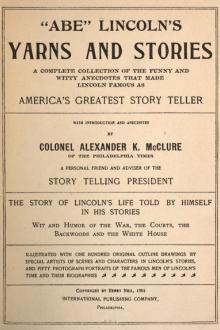A Short History of the World, H. G. Wells [beach books .TXT] 📗

- Author: H. G. Wells
- Performer: -
Book online «A Short History of the World, H. G. Wells [beach books .TXT] 📗». Author H. G. Wells
Between the Black and Caspian Seas the ancient Hittites had been submerged and “Aryanized” by the Armenians before 1000 B.C., and the Assyrians and Babylonians were already aware of a new and formidable fighting barbarism on the north-eastern frontiers, a group of tribes amidst which the Scythians, the Medes and the Persians remain as outstanding names.
But it was through the Balkan peninsula that Aryan tribes made their first heavy thrust into the heart of the old-world civilization. They were already coming southward and crossing into Asia Minor many centuries before 1000 B.C. First came a group of tribes of whom the Phrygians were the most conspicuous, and then in succession the Æolic, the Ionic and the Dorian Greeks. By 1000 B.C. they had wiped out the ancient Ægean civilization both in the mainland of Greece and in most of the Greek islands; the cities of Mycenæ and Tiryns were obliterated and Cnossos was nearly forgotten. The Greeks had taken to the sea before 1000 A.D., they had settled in Crete and Rhodes, and they were founding colonies in Sicily and the south of Italy after the fashion of the Phœnician trading cities that were dotted along the Mediterranean coasts.
So it was, while Tiglath Pileser III and Sargon II and Sardanapalus were ruling in Assyria and fighting with Babylonia and Syria and Egypt, the Aryan peoples were learning the methods of civilization and making it over for their own purposes in Italy and Greece and north Persia. The theme of history from the ninth century B.C. A.D. onward for six centuries is the story of how these Aryan peoples grew to power and enterprise and how at last they subjugated the whole Ancient World, Semitic, Ægean and Egyptian alike. In form the Aryan peoples were altogether victorious; but the struggle of Aryan, Semitic and Egyptian ideas and methods was continued long after the sceptre was in Aryan hands. It is indeed a struggle that goes on through all the rest of history and still in a manner continues to this day.
WE have already mentioned how Assyria became a great military power under Tiglath Pileser III and under the usurper Sargon II. Sargon was not this man’s original name; he adopted it to flatter the conquered Babylonians by reminding them of that ancient founder of the Akkadian Empire, Sargon I, two thousand years before his time. Babylon, for all that it was a conquered city, was of greater population and importance than Nineveh, and its great god Bel Marduk and its traders and priests had to be treated politely. In Mesopotamia in the eighth century B.C. A.D. we are already far beyond the barbaric days when the capture of a town meant loot and massacre. Conquerors sought to propitiate and win the conquered. For a century and a half after Sargon the new Assyrian empire endured and, as we have noted, Assurbanipal (Sardanapalus) held at least lower Egypt.
But the power and solidarity of Assyria waned rapidly. Egypt by an effort threw off the foreigner under a Pharoah Psammetichus I, and under Necho II attempted a war of conquest in Syria. By that time Assyria was grappling with foes nearer at hand, and could make but a poor resistance. A Semitic people from south-east Mesopotamia, the Chaldeans, combined with Aryan Medes and Persians from the north-east against Nineveh, and in 606 B.C.—for now we are coming down to exact chronology—took that city.
There was a division of the spoils of Assyria. A Median Empire was set up in the north under Cyaxares. It included Nineveh, and its capital was Ecbatana. Eastward it reached to the borders of India. To the south of this in a great crescent was a new Chaldean Empire, the Second Babylonian Empire, which rose to a very great degree of wealth and power under the rule of Nebuchadnezzar the Great (the Nebuchadnezzar of the Bible). The last great days, the greatest days of all, for Babylon began. For a time the two Empires remained at peace, and the daughter of Nebuchadnezzar was married to Cyaxares.
Meanwhile Necho II was pursuing his easy conquests in Syria. He had defeated and slain King Josiah of Judah, a small country of which there is more to tell presently, at the battle of Megiddo in 608 B.C., and he pushed on to the Euphrates to encounter not a decadent Assyria but a renascent Babylonia. The Chaldeans dealt very vigorously with the Egyptians. Necho was routed and driven back to Egypt, and the Babylonian frontier pushed down to the ancient Egyptian boundaries.
From 606 until 589 B.C. the Second Babylonian Empire flourished insecurely. It flourished so long as it kept the peace with the stronger, hardier Median Empire to the north. And during these sixty-seven years not only life but learning flourished in the ancient city.
Even under the Assyrian monarchs and especially under Sardanapalus, Babylon had been a scene of great intellectual activity. Sardanapalus, though an Assyrian, had been quite Babylon-ized. He made a library, a library not of paper but of the clay tablets that were used for writing in Mesopotamia since early Sumerian days. His collection has been unearthed and is perhaps the most precious store of historical material in the world. The last of the Chaldean line of Babylonian monarchs, Nabonidus, had even keener literary tastes. He patronized antiquarian researches, and when a date was worked out by his investigators for the accession of Sargon I he commemorated the fact by inscriptions. But there were many signs of disunion in his empire, and he sought to centralize it by bringing a number of the various local gods to Babylon and setting up temples to them there. This device was to be practised quite successfully by the Romans in later times, but in Babylon it roused the jealousy of the powerful priesthood of Bel Marduk, the dominant god of the Babylonians. They cast about for a possible alternative to Nabonidus and found it in Cyrus the Persian, the ruler of the adjacent Median Empire. Cyrus had already distinguished himself by conquering Croesus, the rich king of Lydia in Eastern Asia Minor. He came up against Babylon, there was a battle outside the walls, and the gates of the city were opened to him (538 B.C.). His soldiers entered the city without fighting. The crown prince Belshazzar, the son of Nabonidus, was feasting, the Bible relates, when a hand appeared and wrote in letters of fire upon the wall these mystical words: “Mene, Mene, Tekel, Upharsin,” which was interpreted by the prophet Daniel, whom he summoned to read the riddle, as “God has numbered thy kingdom and finished it; thou art weighed in the balance and found wanting and thy kingdom is given to the Medes and Persians.” Possibly the priests of Bel Marduk knew something about that writing on the wall. Belshazzar was killed that night, says the Bible. Nabonidus was taken prisoner, and the occupation of the city was so peaceful that the services of Bel Marduk continued without intermission.
From the ruins of Persepolis
Photo: Miss F. Biggs
Thus it was the Babylonian and Median empires were united. Cambyses, the son of Cyrus, subjugated Egypt. Cambyses went mad and was accidentally killed, and was presently succeeded by Darius the Mede, Darius I, the son of Hystaspes, one of the chief councillors of Cyrus.
The capital city of the Persian Empire; burnt by Alexander the Great
Photo: Major W. F. P. Rodd
Photo: Major W. F. P. Rodd
The Persian Empire of Darius I, the first of the new Aryan empires in the seat of the old civilizations, was the greatest empire the world had hitherto seen. It included all Asia Minor and Syria, all the old Assyrian and Babylonian empires, Egypt, the Caucasus and Caspian regions, Media, Persia, and it extended into India as far as the Indus. Such an empire was possible because the horse and rider and the chariot and the made-road had now been brought into the world. Hitherto the ass and ox and the camel for desert use had afforded the swiftest method of transport. Great arterial roads were made by the Persian rulers to hold their new empire, and post horses were always in waiting for the imperial messenger or the traveller with an official permit. Moreover the world was now beginning to use coined money, which greatly facilitated trade and intercourse. But the capital of this vast empire was no longer Babylon. In the long run the priesthood of Bel Marduk gained nothing by their treason. Babylon though still important was now a declining city, and the great cities of the new empire were Persepolis and Susa and Ecbatana. The capital was Susa. Nineveh was already abandoned and sinking into ruins.
AND now we can tell of the Hebrews, a Semitic people, not so important in their own time as in their influence upon the later history of the world. They were settled in Judea long before 1000 B.C., and their capital city after that time was Jerusalem. Their story is interwoven with that of the great empires on either side of them, Egypt to the south and the changing empires of Syria, Assyria and Babylon to the north. Their country was an inevitable high road between these latter powers and Egypt.
Their importance in the world is due to the fact that they produced a written literature, a world history, a collection of laws, chronicles, psalms, books of wisdom, poetry and fiction and political utterances which became at last what Christians know as the Old Testament, the Hebrew Bible. This literature appears in history in the fourth or fifth century B.C.
Probably this literature was first put together in Babylon. We have already told how the Pharaoh, Necho II, invaded the Assyrian Empire while Assyria was fighting for life against Medes, Persians and Chaldeans. Josiah King of Judah opposed him, and was defeated and slain at Megiddo (608 B.C.). Judah became a tributary to Egypt, and when Nebuchadnezzar the Great, the new Chaldean king in Babylon, rolled back Necho into Egypt, he attempted to manage Judah by setting up puppet kings in Jerusalem. The experiment failed, the people massacred his Babylonian officials, and he then determined to break up this little state altogether, which had long been playing off Egypt against the northern empire. Jerusalem was sacked and burnt, and the remnant of the people was carried off captive to Babylon.
There they remained until Cyrus took Babylon (538 B.C.). He then collected them together and sent them back to resettle their country and rebuild the walls and temple of Jerusalem.
Before that time the Jews do not seem to have been a very civilized or united people. Probably only a very few of them could read or write. In their own history one never hears of the early books of the Bible being read; the first mention of a book is in the time of Josiah. The Babylonian captivity civilized them and consolidated them. They returned aware of their own literature, an acutely self-conscious and political people.
Their Bible at that time seems to have consisted only of the Pentateuch, that is to say the first five books of the Old Testament as we know it. In addition, as separate books they already had many of the other books that have





Comments (0)